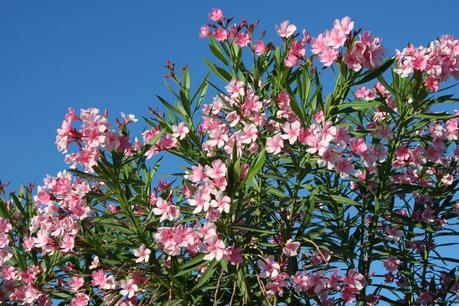
8 Flowering Shrubs That Will Look and Smell Good In Your Garden
Having a beautiful garden is not just pleasing to the eyes but also serves many other purposes. Take flowering shrubs, for example. These plants do not just perfume the air with their fragrance but also display their lovely blooms with flair from early spring to late fall and can be used as hedge plants, foundation plantings, and play a part in preventing soil erosion.
There are many flowering shrubs to choose from, and picking the right one that will best suit your area is crucial for your successful gardening activity. True, you have to be wary of certain environmental conditions, but once you surpass this step, your garden will never look the same ever again - and in a good way. As such, you can find here eight of the best flowering shrubs you can grow in your garden.
Azalea
Nothing can be a more eye-catching and head-turning charmer than having azaleas in your garden. This flowering shrub pops many colors that range from white to pink, red, purple, orange, and yellow. They bloom during the early spring, so it is best to plant them in late spring or early fall.
One thing you have to consider is your location. Azaleas grow best in USDA plant zones 5 to 9, but a few varieties can also tolerate colder regions all the way to zone 4. A good location to plant them is where they can receive sunlight in the morning and a good shade in the afternoon. Interested in planting azaleas? You can read more about them on Gardener's Path.
Lilac
Lilacs are deciduous shrubs, which means that they shed leaves seasonally. Like the azaleas, they are also spring-blooming shrubs that perfume the garden with their sweet fragrance. You can see them as delicate lavender-blue flowers, but some varieties are white, deep purple, or burgundy.
They love to be exposed to the sun for at least 6 hours daily for a full bloom. They also thrive in loamy, well-drained, neutral to alkaline soil. One common problem when handling lilacs, though, is when they become too big. They can also catch bacterial blight disease, so you must prune them to provide good air circulation.
Summersweet
Summersweet is among the rare summer-blooming shrubs that can thrive in shady areas and continue to display their beauty even in the fall when their leaves turn yellow. The sweet-spicy fragrance of summersweet blossoms attracts pollinators such as bees and butterflies.
There are several notable things about this flowering shrub that cannot be overlooked. One of those is they require only minimal maintenance. They can also be easy to propagate from stem cuttings during the early summer or planted as seeds in the fall. Furthermore, they are especially adaptable to different conditions and remain hardy throughout 3 to 9 USDA zones.
Butterfly Bush
As its name suggests, this honey-scented flowering bush easily attracts the garden fairies, aka butterflies. Their attractive blooms come in an array of striking hues of pink, blue, and deep purple. They usually require at least 8 hours of exposure to sunlight, well-drained soil, and a slightly acidic to a neutral environment.
Despite their beautiful lilac-like flowers, this plant is considered invasive in many Pacific Northwest regions and some parts of coastal California. However, thanks to cultivar breeders, butterfly bushes now come in nearly-sterile to sterile varieties.
Hydrangea
Large globes of hydrangea in your garden provide a stunning display of flower elegance in the summer and springtime. Despite their high-maintenance appeal, they are actually not that hard to maintain. In fact, when planted at the right time and right place, they can grow quickly by themselves. Under acidic or alkaline conditions, they can give your garden vibrant shades of lavender-blues or pinkish-reds, respectively.
Camellia
Prized for their exquisite beauty that blooms during the autumn season to spring, even in winter when the rest of the flower garden offers so little, Camellias have gained quite a reputation of being the 'Queen of the Winter Flowers.' Their beautiful rose-like flowers give white, pink, or red shades and have a pleasing fragrance.
Camellias also come in different species, and of these, one is used to make the traditionally famous caffeinated teas, particularly the young leaves of Camellia sinensis.
Abelia
Abelia is an ornamental shrub that is perfect for home gardeners who want to have a maintenance-free yet attractive landscape. This somewhat shade-tolerant plant can provide your garden a lovely tinge of white and pink blooms and foliage that transform their color from gold to burgundy along with the changing season.
The tubular flowers have a jasmine-like scent that attracts hummingbirds, butterflies, and other insect pollinators.
Forsythia
Welcoming the spring with its bright gold and canary yellow blossoms, Forsythia is among the go-to plants that could make your garden lively again after the winter season. Although their flowers last for about 10 to 14 days, having them in your garden is definitely worthwhile.
Taking care of Forsythia is easy. Just make sure they get the amount of sun exposure they need, planted in well-draining soil, and regularly watered. All these basic care are necessary to get the most out of their full bloom.
Takeaway
The flowering shrubs mentioned above are just some of the best plants you can grow in your garden. When it comes to adding a dramatic flair and an air of sweet-smelling perfume in your yard, they would certainly never disappoint!
